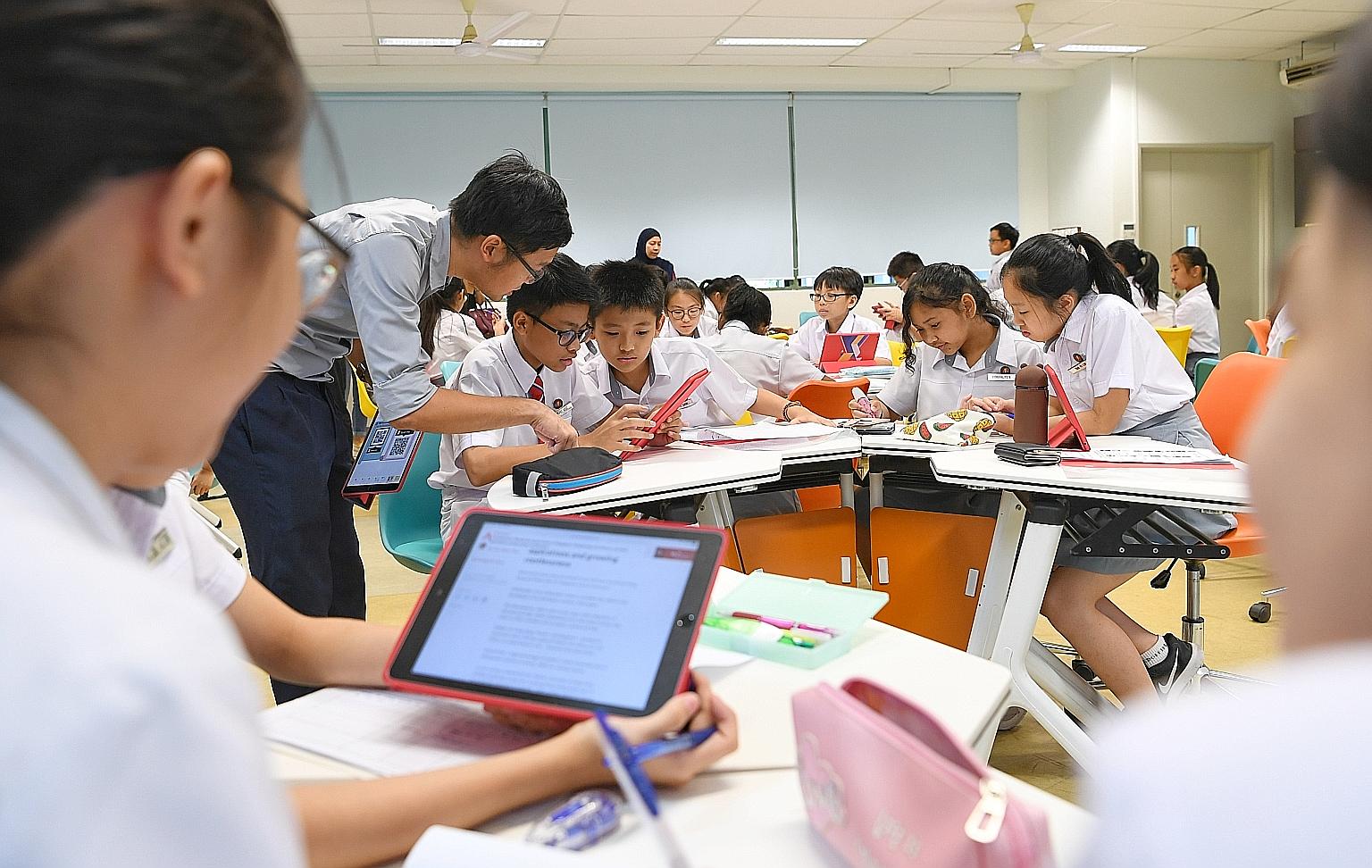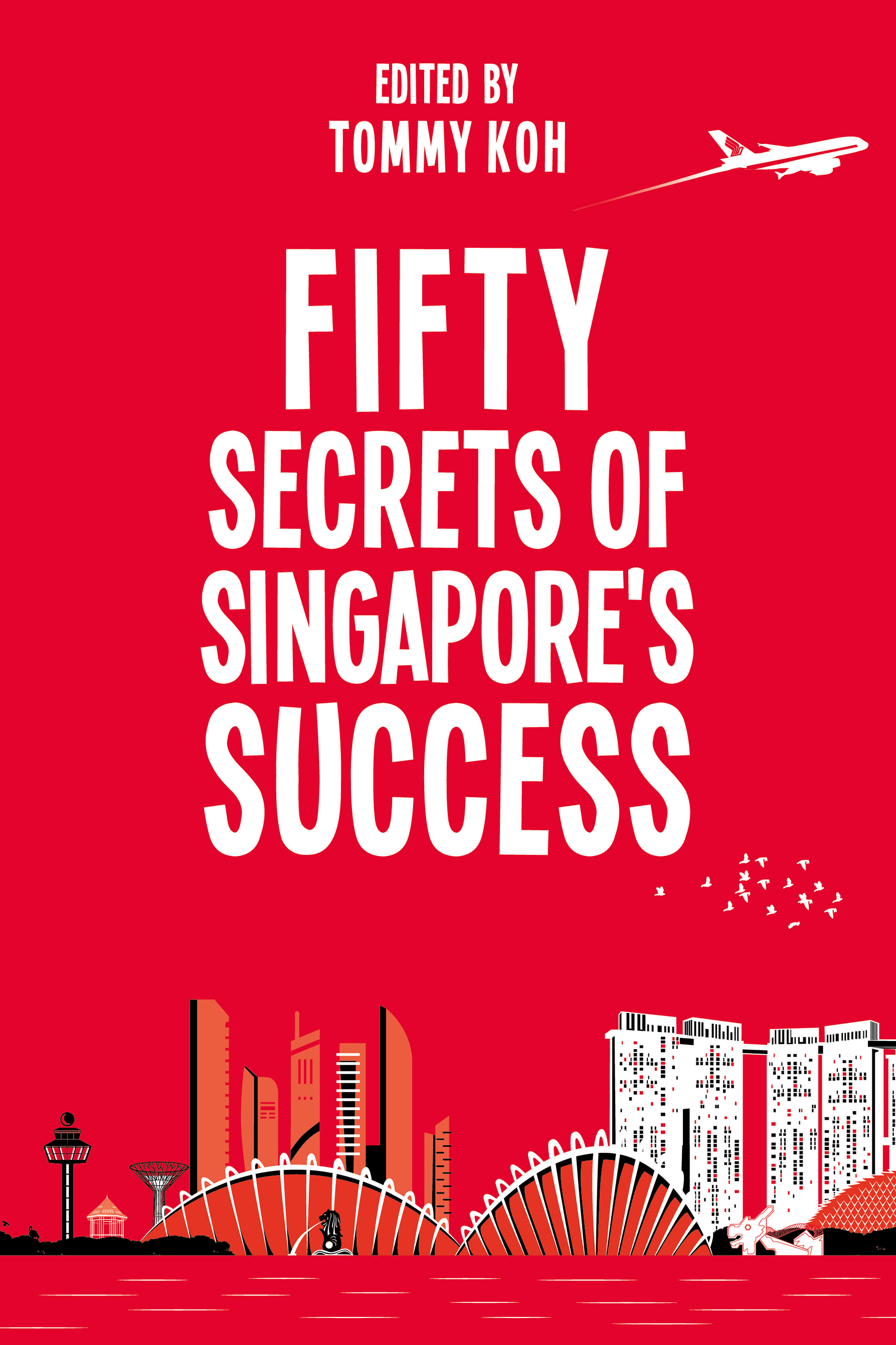Singapore maths adds up for educators around the world
A new Straits Times Press book launched last week, Fifty Secrets Of Singapore's Success, has 50 essays on various aspects of the nation that have gained acclaim over the years. This essay by Senior Education Correspondent Sandra Davie recounts how Singapore's maths has made a mark globally.
Sign up now: Get ST's newsletters delivered to your inbox

The curriculum, teaching approach and textbooks developed by Singapore's Ministry of Education have helped make schoolchildren here world beaters in maths, an achievement recounted in a new book .
PHOTOS: KHALID BABA, ST PRESS
Follow topic:
The irony will not be lost on British educators. In 2019, Singapore commemorated the 200th year since Sir Stamford Raffles arrived on its shores. As the former colony reflected on what it inherited from Britain, schools there have joined more than 50 education systems around the world in adopting Singapore-style mathematics.
Little Singapore first started to draw a lot of attention when it came out tops among 37 countries, including Britain and the United States, in the 1995 and 1999 rankings of the Trends in International Mathematics and Science Study (TIMSS), conducted by the International Association for the Evaluation of Educational Achievement (IEA).
In the US, some like parents Jeffery Thomas and his Singaporean wife, Dawn, began importing Singapore textbooks to supplement their daughter's public schooling, and for other parents who were homeschooling their children. When a handful of schools also started asking for the books, the couple, based in Portland, Oregon, set up Singapore Math Inc in 1998 to import the books.
Beyond excelling at TIMSS, Singapore students went on to consistently outperform their peers in the Programme for International Student Assessment (Pisa) studies, dubbed the "World Cup for Education". The Pisa 2009, conducted by the Paris-based Organisation for Economic Cooperation and Development (OECD), ranked Singapore students second in maths, fourth in science and fifth in reading. Three years later, in 2012, Singapore held its second spot in mathematics, and climbed up to the third place in science and reading.
In the Pisa 2015, the Republic's 15-year-olds were ranked No. 1 for mathematics, science and reading over their peers from 71 other economies. Furthermore, their scores - especially for mathematics - were way above everyone else's. The Republic's students on average scored 564, while students from Hong Kong, which was placed No. 2, scored on average 548, and third-placed Macau's students were on 544.
TEACHING PROBLEM-SOLVING, NOT ROTE LEARNING
As the accolades piled up over the years, maths specialists around the world wanted to know the secret to the little red dot's success. They deduced that it is "Primary Mathematics" - the curriculum, teaching approach and textbooks first developed in 1982 in Singapore by the Ministry of Education.
OECD's director of education Andreas Schleicher, a mathematician by training, praised Singapore's stripped down mathematics curriculum. "Mathematics in Singapore is not about knowing everything. It's about thinking like a mathematician," he declared, adding that the decision to design the curriculum around how students learn maths rather than around the structure of the academic discipline was a stroke of genius.
That development involved a nine-member team led by mathematics teacher and curriculum specialist, Dr Kho Tek Hong, that had been tasked to create high-quality teaching materials. The team studied the latest behavioural science research and travelled to schools in other countries, including Canada and Japan, to compare the effectiveness of different teaching methods.
Aiming to move away from simple rote learning and focus instead on teaching children how to solve problems, the textbooks the group produced by the early 1980s were influenced by educational psychologists, such as American Jerome Bruner. He posited that people learn in three stages: by using real objects, then pictures, and then through symbols.
Based on this Concrete Pictorial Abstract (CPA) approach to learning, the team also developed a "spiral curriculum", where each topic is revisited in intervals at a more sophisticated level. A concept is represented initially by "concrete" materials, later by models (pictures) and then finally by abstract notation (such as plus or equals signs). There is also a strong emphasis on modelling mathematical problems with visual aids - using coloured blocks to represent fractions or ratios, for example.
Dr Kho, who retired in 2007, said that under the CPA framework, if a problem involves adding pieces of fruit, for example, children can first handle actual fruit before progressing to abstract counters or cubes that represent the fruit. The visual and hands-on aids work well in helping children master the concepts, he observed. "The blocks, cards and bar charts are like diagrams that tell a story of the problem, so the student can visualise how to solve it."

He noted that students are given time to think deeply about the maths and to really understand concepts at a relational level rather than as a set of rules or procedures, allowing them to create a solid maths foundation upon which to build increasingly complex skills. In short, Singapore maths is methodical and works - just like the nation, really.
American Bill Jackson, who discovered Singapore mathematics when he was a school teacher in New Jersey 20 years ago, recalled: "American math textbooks were thick and heavy and cover many topics superficially and usually in an incoherent way. In contrast, Singapore textbooks, besides having these strange, exotic fruits like rambutans and durians and using British English, had far fewer topics. They taught math in-depth for mastery and carefully built mathematical understanding in a systematic way." Of this CPA approach, which he liked, he said: "It makes the learning of math fun and meaningful, and helps students develop positive attitudes about math."
Mr Tim Oates, who was in charge of a review of England's curriculum in 2010-2013 and is now director of research at the exam board, Cambridge Assessment, is deeply impressed by the design and implementation of Singapore maths. He said: "It embodies the idea of 'curriculum coherence' - where policy and practice ensure that teaching practice, learning materials and standards all line up coherently. This is a feature of high-performing systems, and absent in poor-performing ones." He added: "It is based on ideas of all children are capable of learning anything, depending on how it is presented to them and the effort which they put into learning it... now frequently referred to as 'growth mindset'."
WORKING WELL WORLDWIDE
The approach does have its critics, who say Singapore maths is not so easy to transplant. Teachers have to be well trained to gain an in-depth understanding of the novel methods. Despite this, a growing number of schools around the world are investing in the textbooks and training their teachers in Singapore maths.
Marshall Cavendish (Singapore), the leading publisher of Singapore maths textbooks, said it sold its maths textbooks and licensed their publication to more than 60 countries currently. In 2018, it sold 5.75 million copies of Singapore maths textbooks to countries including the US, UK, Israel and Chile.
Ms Lee Fei Chen, senior adviser to Singapore-based Times Publishing Group, which owns Marshall Cavendish, said: "Our humble textbook has taken on a life of its own. It is now available in print and digital form, on devices and on various platforms as well. The Singapore curriculum is now cited, researched or practised in many countries, and integrated into many syllabuses around the world."
Mr and Mrs Thomas have published their own series of Singapore maths textbooks, called Dimensions Math, which are used by a range of schools in the US. They include those like Public School 132 in Williamsburg, Brooklyn, which serves mostly poor and minority children, and elite schools, such as the Sidwell Friends School in Washington, a private school once attended by then US President Barack Obama's daughters.
The series has made its way to schools in several other territories, including The Netherlands, England, Indonesia and, more recently, Chile and Bermuda. "Singapore Math has become an established part of national and international conversations about math education," said Mr Thomas.
And schools say the results speak for themselves. North Hills Christian School in North Carolina, which implemented Singapore maths in 2015, saw a 52 per cent improvement in maths scores after just one year. Another school, Alderman Road Elementary School in Fayetteville, North Carolina, adopted Singapore maths strategies when maths scores started declining in 2013 and 2014. Maths coach Andi Webb reported in 2016 that after one year of implementing Singapore maths, the school clawed back the 10 per cent decline in scores. And after the second year, scores increased by an additional 4 per cent.
In the UK, the Inspire Maths series of textbooks, adapted from the Singapore books, were trialled in 70 primary schools by the Department for Education in 2015 and 2016. Independent research conducted by the Oxford University Department of Education in 2016 found that British schoolchildren made more progress in maths when teachers used Singapore-style methods. Teachers reported that the programme could boost children's motivation and engagement, and the evaluation found that it could be used creatively and flexibly.
This led to the British government pledging £41 million (S$74 million) to fund a network of "mastery specialist teachers". It was reported that the Singapore style of teaching maths will reach as many as 8,000 primary schools in Britain over the next few years.
Clearly, Singapore maths adds up to success for educators, students, publishers and book distributors at home and abroad. Some have questioned the naming of this maths approach - based on international research - after Singapore, observed Mr Andy Psarianos, who is behind the Maths - No Problem! textbooks in the UK. "Whether you call it Singapore Math, math mastery or something else doesn't matter. What matters is that Singapore did something with math that made everyone stand up and take notice. Singapore went from obtaining mediocre math scores to the best in the world in a very short period of time - and they've maintained that momentum," he said.
Mr Oates added: "The initial development of Singapore Math was impressive in its own right. It was heavily research-based, scanned the world for the best models and approaches, and aimed to support all learners, not just some. But what is even more impressive has been the sophistication of the policy as a whole. The fidelity of implementation has been doubly impressive. It is one thing to get the right model, and quite another to ensure that practice is both transformed for the better and, over time, remains focused on key principles."
• The book is available at $37.45 (inclusive of GST) at all major bookshops and shop.sph.com.sg

